Henna, a timeless art form, holds a special place in Egyptian culture. Known for its rich history and intricate patterns, Egyptian henna is a beautiful way to express creativity and honor tradition. Whether it’s for weddings, festivals, or personal expression, the versatility of Egyptian henna design continues to captivate. In this article, we’ll explore popular Egyptian henna motifs, their significance, and the latest trends to inspire your next design.
Egyptian henna designs:
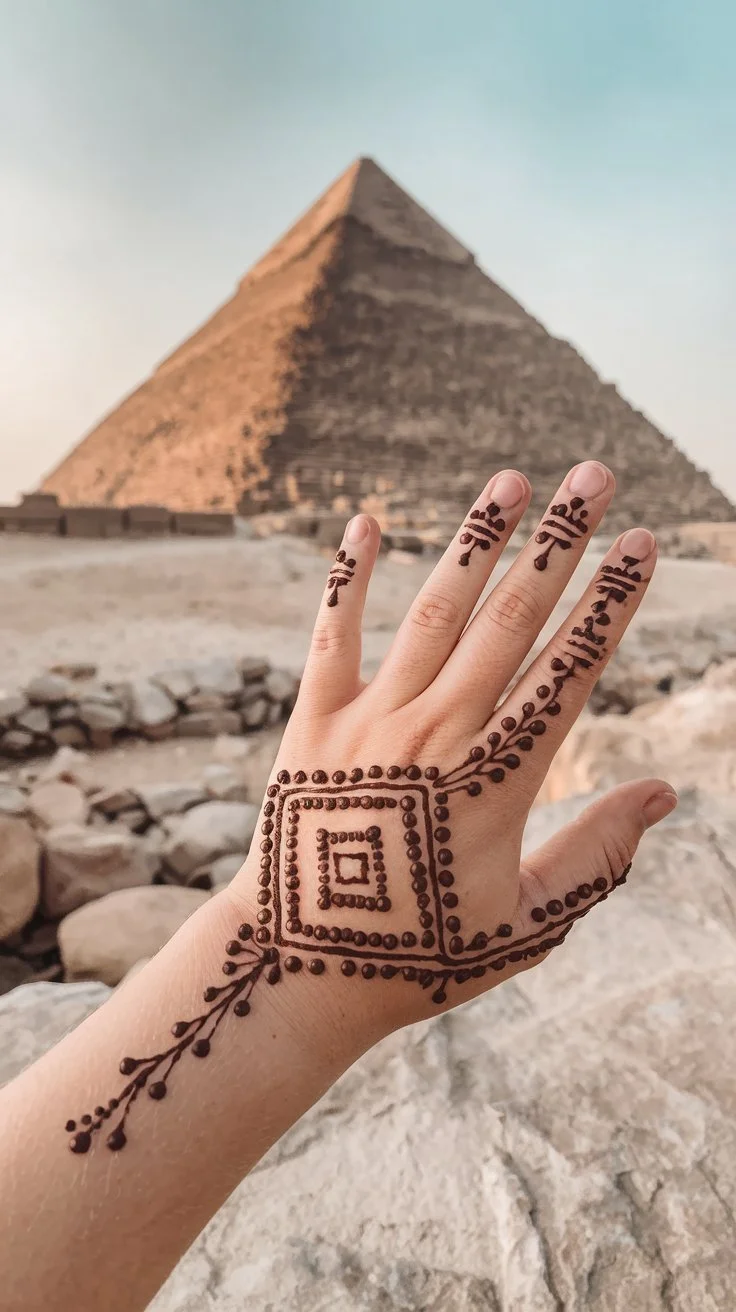
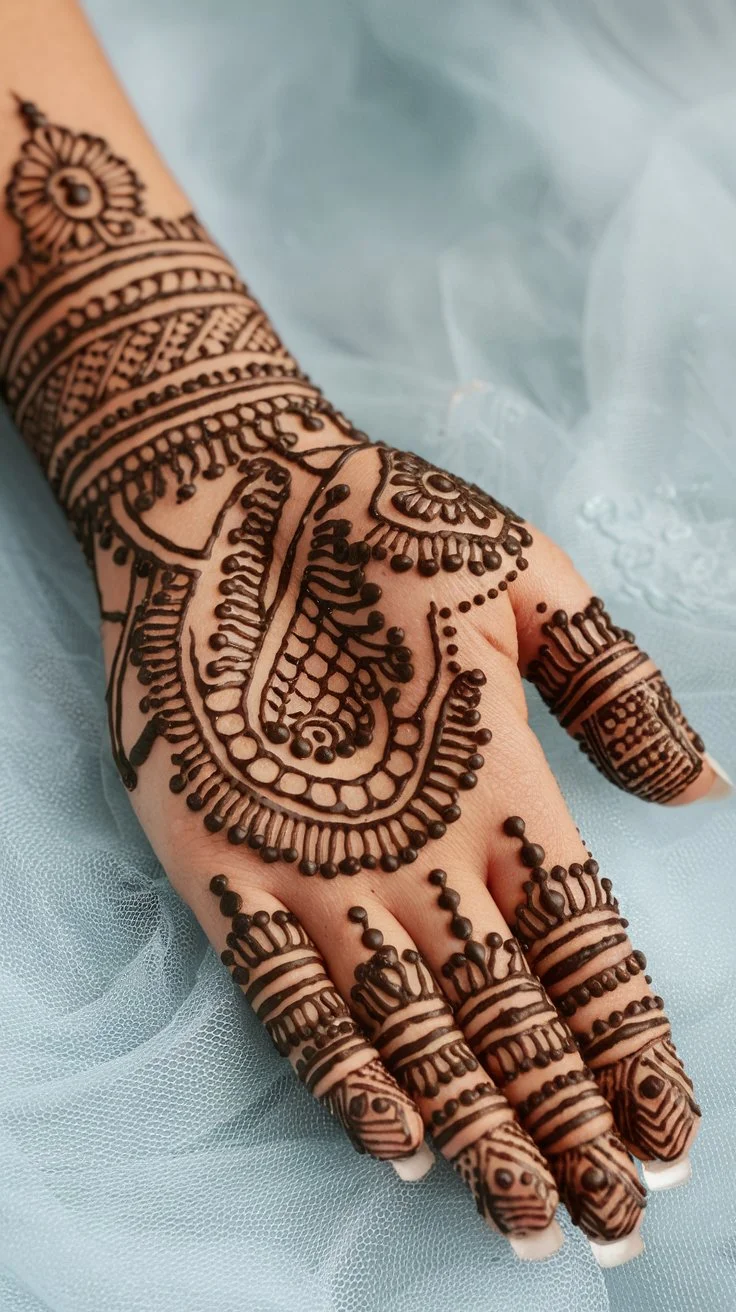
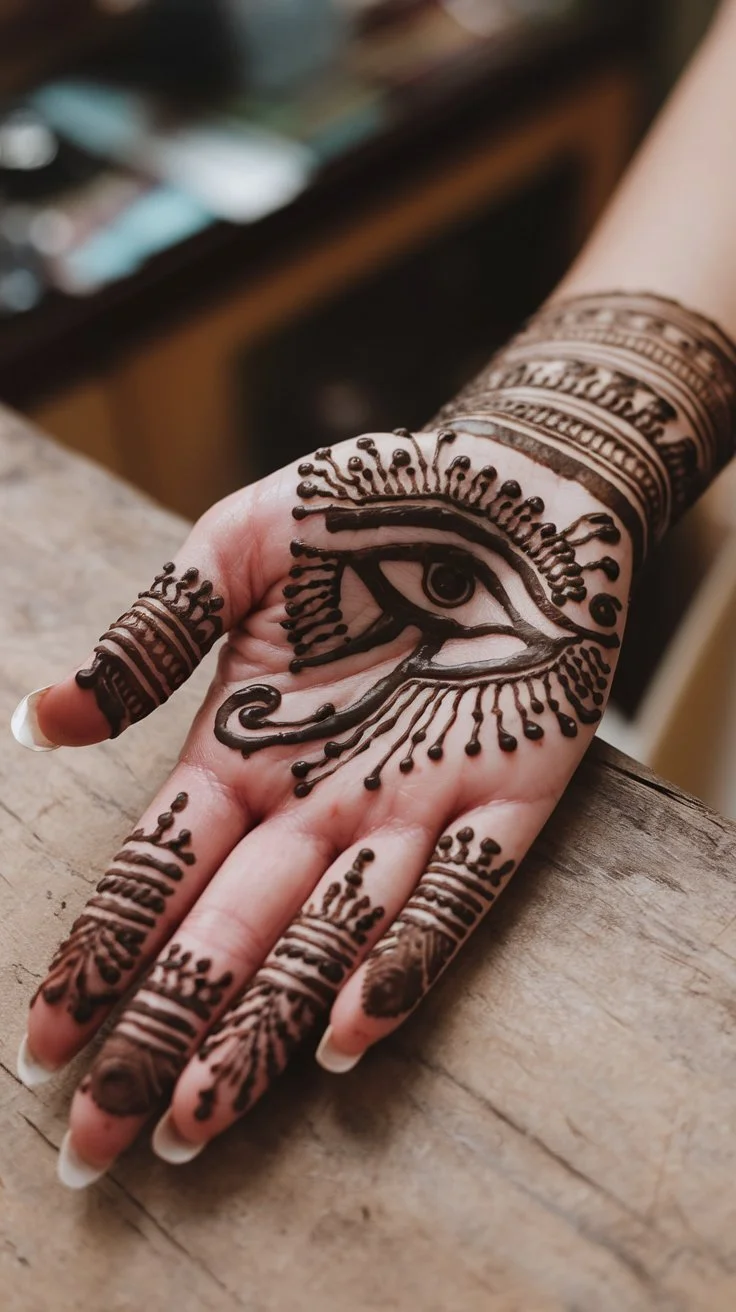

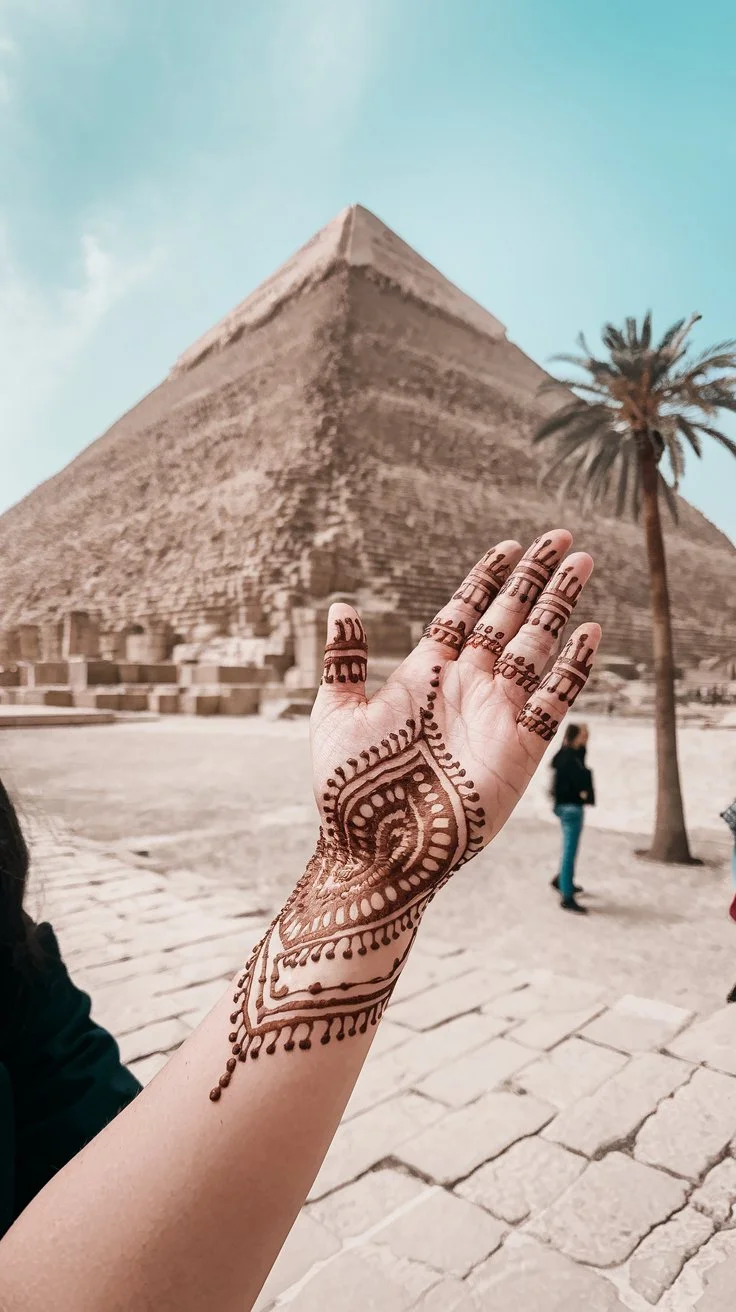











The History and Significance of Egyptian Henna
Henna in Egypt dates back to ancient times, with roots in both beauty rituals and religious practices. Egyptians used henna not only for decorative purposes but also for its cooling properties in the hot climate. From the pharaohs to modern-day brides, henna remains a symbol of joy, celebration, and protection against evil spirits.
The intricate patterns and symbols of Egyptian henna designs reflect the country’s rich cultural heritage. Whether it’s for a wedding, Eid, or other festive events, the application of henna is seen as a ritual that brings blessings and happiness to the wearer.
Popular Egyptian Henna Design Motifs

Egyptian henna is distinguished by its bold lines, geometric precision, and symbolic motifs. Here are some of the most popular elements used in Egyptian henna designs:
- Ancient Symbols: One of the most iconic features of Egyptian henna is its incorporation of ancient symbols. Designs featuring the Ankh (symbol of life), the Eye of Horus (protection and health), and scarabs (renewal and resurrection) are commonly used. These symbols add a spiritual and historical depth to the henna patterns.
- Floral and Leafy Patterns: Floral motifs have always played a significant role in Egyptian henna designs. Leaves, vines, and flowers are used to create delicate yet bold patterns that are placed along the hands, arms, and feet. These organic designs symbolize beauty and growth.
- Geometric Shapes: Geometric patterns are widely used in Egyptian henna. These shapes—triangles, diamonds, and lines—often reflect the architectural beauty of ancient Egypt, such as the symmetry seen in the pyramids and temples.
- Abstract Art: Modern Egyptian henna artists often incorporate abstract designs that combine traditional and contemporary elements. These are perfect for those who want a unique, artistic look.
Henna Placement and Design Styles
Where and how henna is applied plays a significant role in its aesthetic appeal. Here’s a breakdown of the common placement styles in Egyptian henna art:
- Hands: Egyptian henna designs on the hands can range from full-hand coverage with intricate details to minimalist patterns focused on the fingers. Bold geometric shapes are typically concentrated on the palm, while delicate floral designs adorn the fingers.
- Feet: Henna applied to the feet often mirrors the designs on the hands, with patterns wrapping around the ankles and toes. Foot designs are a favorite for brides and are often more intricate, representing love and fertility.
- Full Arms and Legs: For special occasions like weddings, women may choose to have full-arm or leg henna. These designs feature continuous patterns that extend from the wrists to the upper arms or from the feet up to the knees.
Occasions for Egyptian Henna
Henna is worn during various occasions in Egypt, and the designs can vary based on the event:
- Weddings: Egyptian bridal henna is traditionally elaborate, with designs that cover both hands, arms, feet, and sometimes legs. These designs symbolize love, prosperity, and protection for the bride as she enters married life.
- Festivals and Celebrations: Religious and cultural celebrations like Eid, Ramadan, and engagements are common times for applying henna. For these occasions, women often opt for simple yet meaningful designs, including floral and geometric shapes that reflect the festive spirit.
- Everyday Wear: With the rise of minimalist fashion, some opt for subtle, everyday henna designs that feature just a few lines, dots, or symbols, often applied to the wrist or fingers.
Modern Trends in Egyptian Henna

While traditional designs are still popular, modern Egyptian henna has evolved to reflect contemporary tastes:
- Minimalist Designs: Minimalist henna is growing in popularity, with simple lines, tiny geometric shapes, and dots creating chic, understated patterns. This style is perfect for those who prefer something less ornate.
- Fusion Henna: Modern henna artists are blending elements of other regional styles, such as Indian and Moroccan henna, with Egyptian motifs. The result is a fusion of designs that combine the intricacy of Indian henna with the symbolic beauty of Egyptian art.
- Color Variations: While traditional Egyptian henna is usually a deep brown, some modern artists experiment with red or black henna to create striking contrasts in their designs.
Choosing the Right Henna for Egyptian Designs
For authentic Egyptian henna, it’s crucial to choose natural henna paste, which gives a rich brown color. Avoid chemical-laden “black henna,” which can cause skin irritation and permanent damage. Natural henna, made from the leaves of the henna plant, not only looks beautiful but also nourishes the skin.
How to Apply Egyptian Henna Designs: A Step-by-Step Guide
Here’s a basic guide to help you apply Egyptian henna designs:
- Prepare the Skin: Clean the area with water and soap to remove any oils or lotions.
- Mix the Henna Paste: For the best results, use fresh henna powder mixed with water, lemon juice, and essential oils.
- Choose a Design: Start with a simple design like a floral or geometric motif. You can use a pre-made stencil or draw freehand.
- Application: Use a henna cone or applicator bottle to apply the henna. Ensure the lines are clean and precise for the best outcome.
- Aftercare: Let the henna dry for a few hours, then scrape off the dried paste. Avoid water for at least 24 hours to let the color deepen.
Conclusion
Egyptian henna design is a beautiful blend of tradition, symbolism, and artistry. Whether you prefer bold, geometric patterns or delicate floral motifs, there’s a style for every taste and occasion. Whether you’re a bride preparing for your special day or someone looking to celebrate with a touch of culture, Egyptian henna offers endless possibilities.
So, why not try one of these timeless designs and immerse yourself in the rich artistic heritage of Egyptian henna?
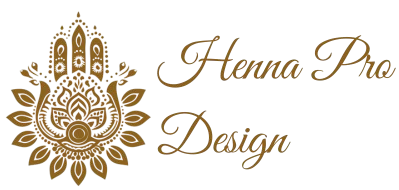
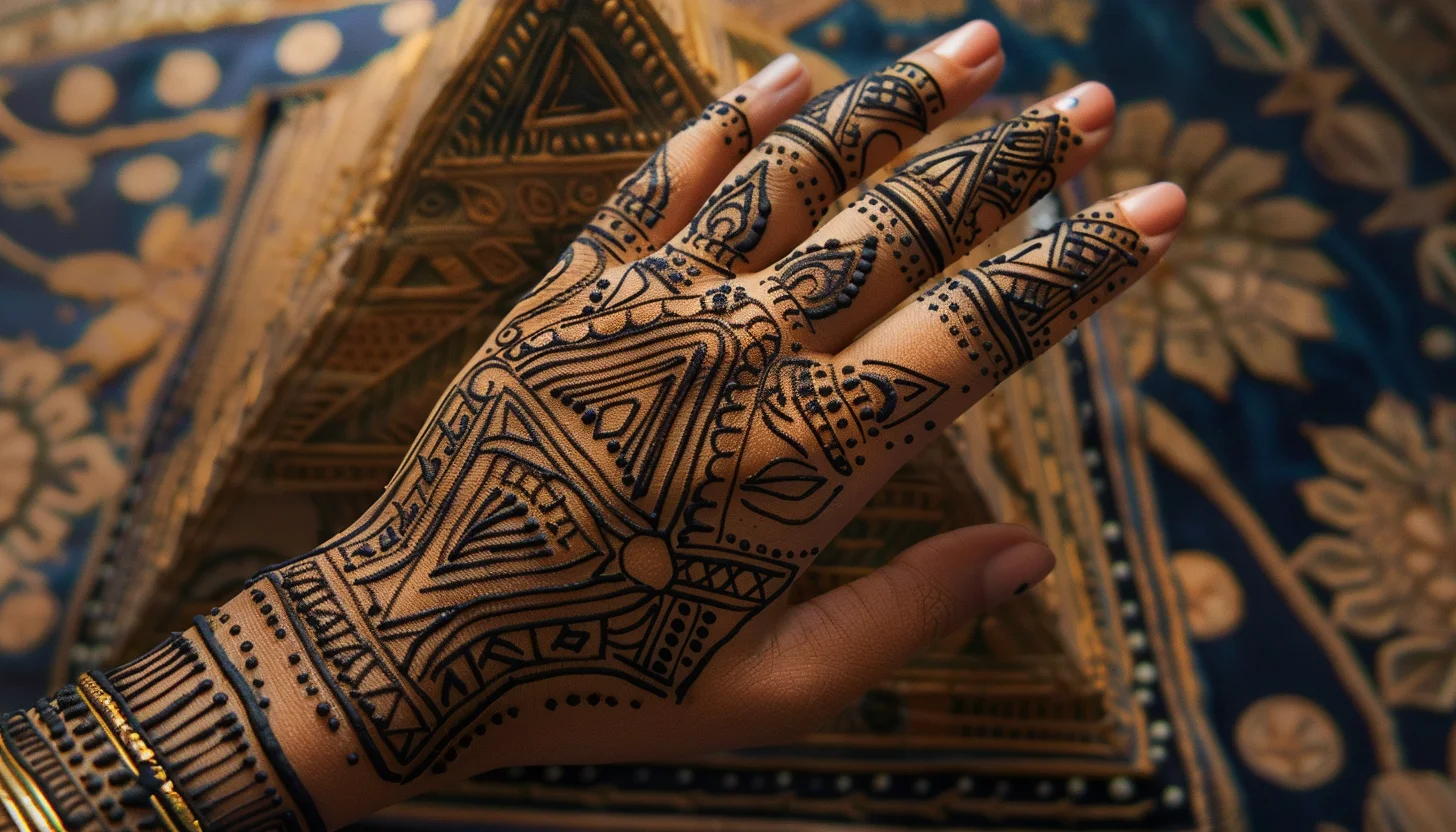

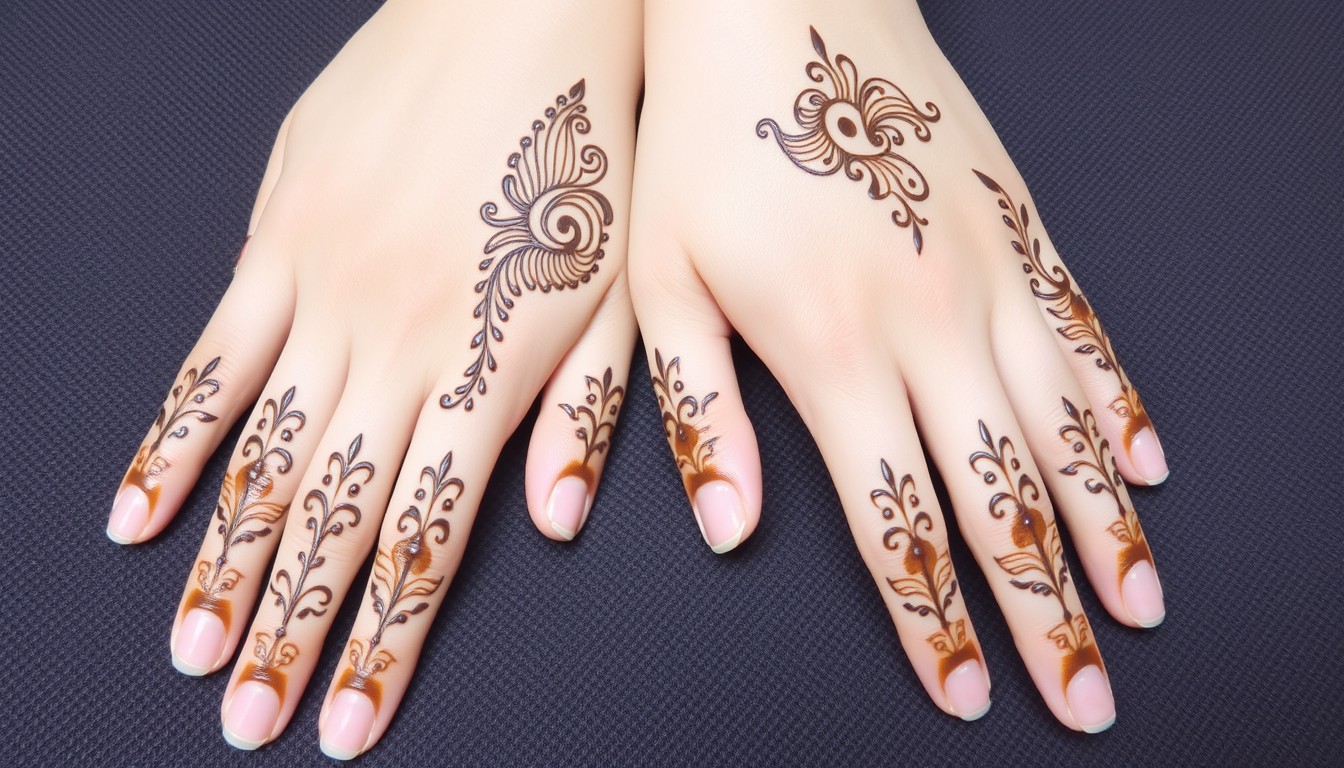
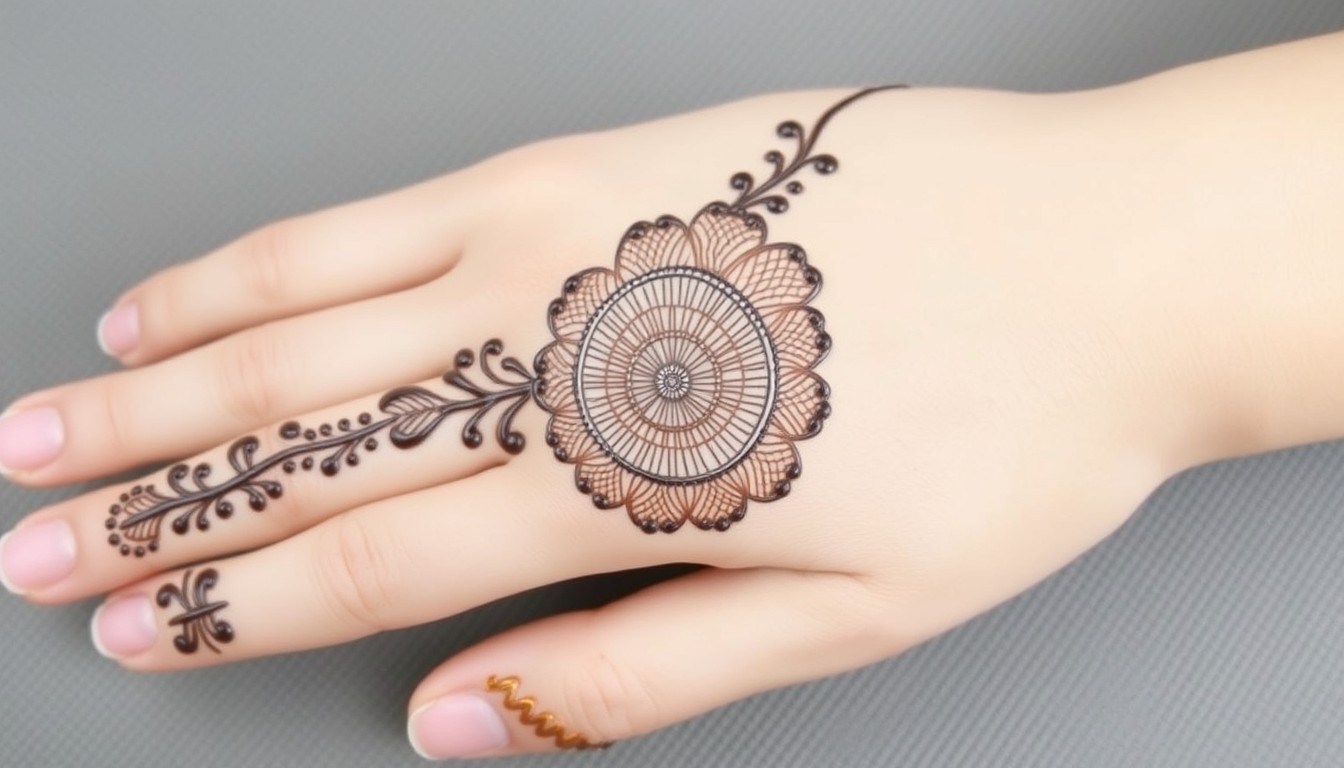
Leave a Reply